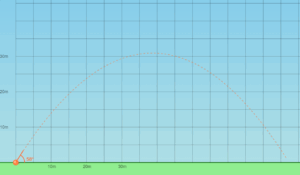Vector Addition: Parallelogram Law
Vector Parameters
Example
Question:
Find the magnitude and direction of the resultant of two vectors \(\mathbf{A}\) and \(\mathbf{B}\) in terms of their magnitudes and the angle \(\theta\) between them.
Solution:
Let \(OP\) and \(OQ\) represent vectors \(\mathbf{A}\) and \(\mathbf{B}\) making an angle \(\theta\) (see Fig. 3.10). By the parallelogram method, the resultant vector is:
\[
\mathbf{R} = \mathbf{A} + \mathbf{B}
\]
From the geometry,
\[
OS^2 = ON^2 + SN^2
\]
But \(ON = A + B\cos\theta\),
\(SN = B\sin\theta\), so
\[
OS^2 = (A + B\cos\theta)^2 + (B\sin\theta)^2
\]
\[
R^2 = A^2 + B^2 + 2AB\cos\theta
\]
\[
R = \sqrt{A^2 + B^2 + 2AB\cos\theta}
\]
For direction, by the law of sines:
\[
\frac{R}{\sin\theta} = \frac{B}{\sin\alpha} = \frac{A}{\sin\beta}
\]
And,
\[
\sin\alpha = \frac{B\sin\theta}{R}
\]
\[
\tan\alpha = \frac{B\sin\theta}{A + B\cos\theta}
\]
Equation above gives the direction of the resultant. These are known as the law of cosines (for magnitude) and law of sines (for direction).
Parallelogram Law of Vector Addition
When two vectors are represented as adjacent sides of a parallelogram, the resultant vector is given by the diagonal of the parallelogram.
The direction of the resultant vector can be found using the sine rule:



